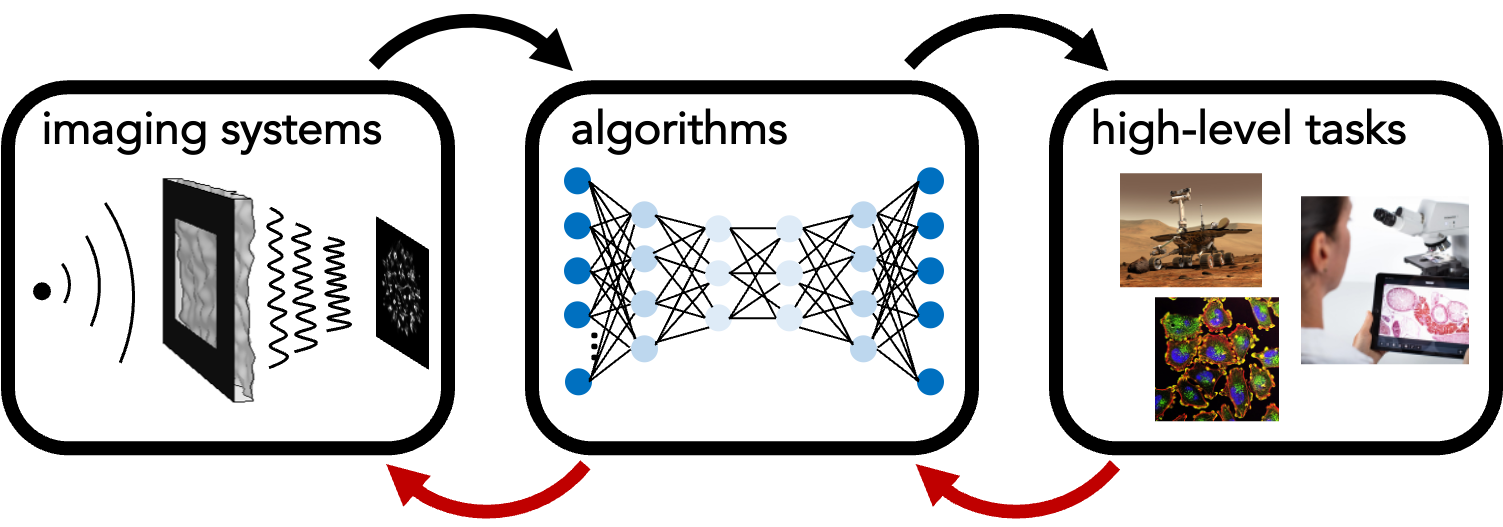Computational Imaging Lab @ Cornell

We combine ideas from machine learning, signal processing, optics, computer vision and physics to build better imaging systems (cameras, microscopes, and telescopes) through the co-design of optics, algorithms, and high-level tasks. Our aim is to design the next generation of smart, computational imagers that fuel scientific discovery, robotics, and medical diagnostics. We are particularly interested in:
- Differentiable optics - Can we use data and machine learning tools to design better cameras, microscopes, and telescopes?
- Physics-informed machine learning - How can we effectively combine our knowledge of imaging system physics with deep learning?
- Task-based imaging systems - What's the best camera or microscope for high-level tasks, such as robotics or medical diagnostics?
- Inverse problems and neural representations: Can we leverage neural priors to improve our imaging systems for microscopy and photography?
- Uncertainty quantification in imaging: How can we make imaging algorithms more trustworthy and robust for critical applications in science and medicine?
Check out our previous research projects and publications for more information!
Interested? Come join join us at Cornell!
news
| Jun 2025 | Cassandra is giving a spotlight presentation at the Workshop on Uncertainty Quantification for Computer Vision (UNCV) at CVPR on her work on conformal prediction for imaging inverse problems! |
|---|---|
| Jun 2025 | Kristina was awarded an Amazon Research Award for her proposal on ‘Trustworthy extreme imaging for science using interpretable uncertainty quantification’ as part of AWS AI! |
| Apr 2025 | Kristina is co-organizing the Computational Cameras and Displays workshop (CCD) at CVPR. Submit your posters by April 25th and come join us in Nashville this June! |